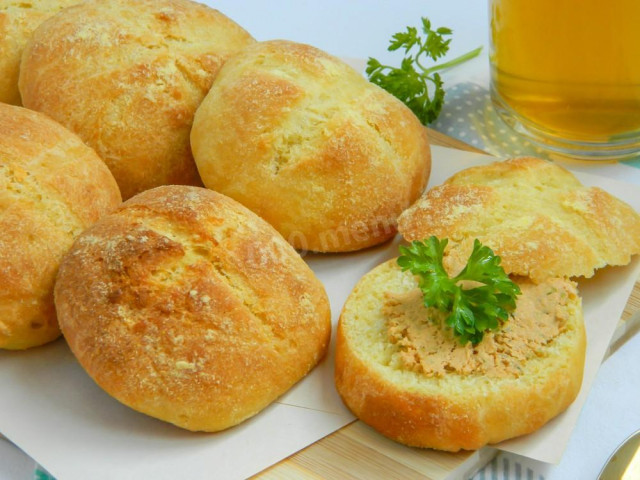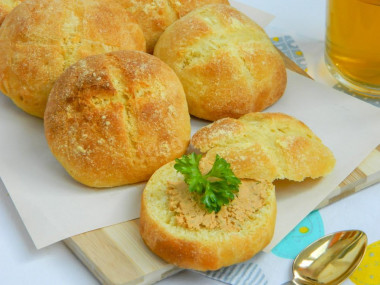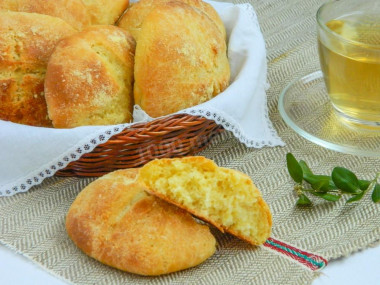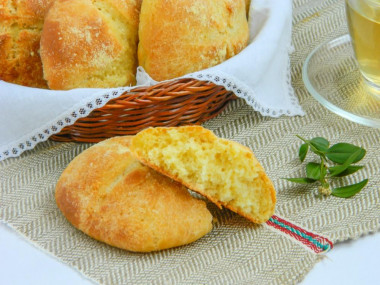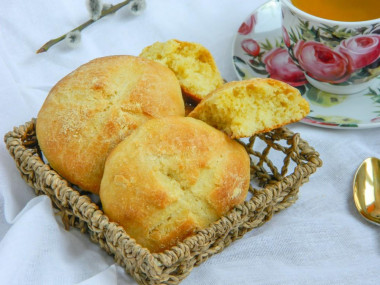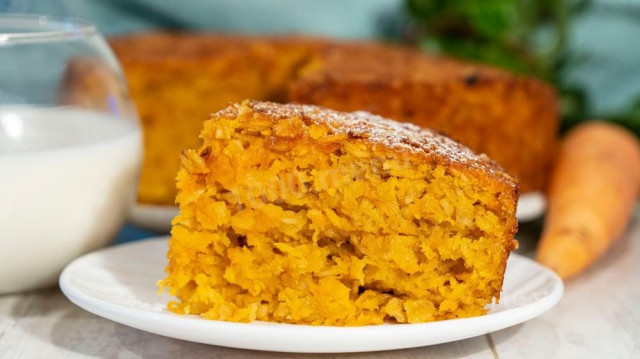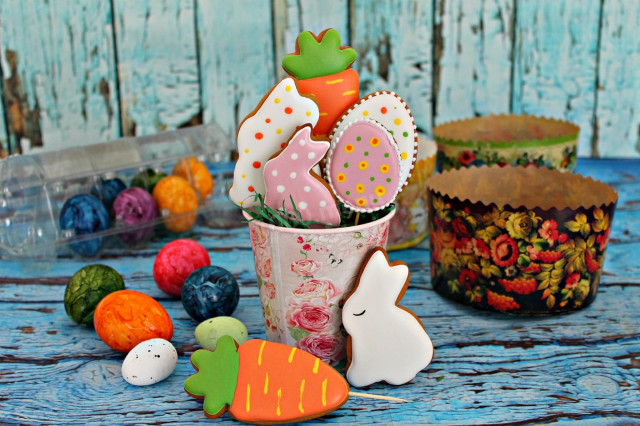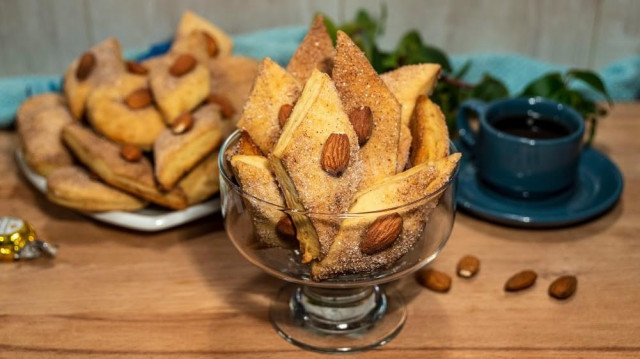Composition / ingredients
Step-by-step cooking
Step 1:

Prepare all the necessary ingredients for making corn flour buns. Corn flour is better to look for the finest grinding. From such flour, buns will turn out to be more airy. Wheat flour is the highest grade, chicken egg is C0. Milk and butter are suitable for any fat content. Pour an incomplete tablespoon from the specified amount of corn flour for sprinkling buns.
Step 2:
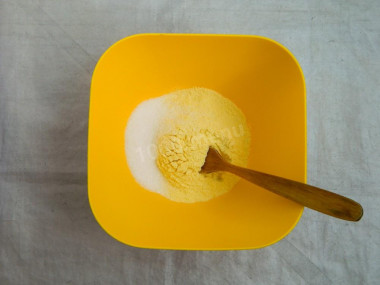
To knead the dough, take a deep bowl, it is convenient to mix dry and wet ingredients in it. Pour corn flour and salt into it. Mix everything well so that the salt is evenly distributed over the flour.
Step 3:
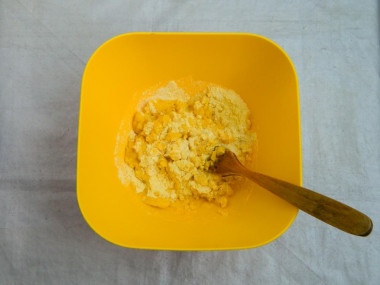
Separate one quarter of the whole piece of butter and set aside for now. You'll need it later. Melt the remaining piece of butter. To do this, cut the butter into several pieces (I got 8). Place it in a saucepan or frying pan, and so that the oil does not burn, put it on a small fire. Wait until all the pieces are melted and remove from the heat. Mix the resulting creamy mixture with a spatula and slowly add it to the salted corn flour.
Step 4:

Before using yeast, read the instructions for them. There are different types of yeast - some need to be activated by first dissolving in warm water or milk, and some can be immediately added to flour. Those that need to be activated will suit us. In warm water (37-40°C) add sugar and yeast. Stir and leave for 10 minutes. If a fluffy cap appears on the surface, then the yeast has become active and you can continue cooking.
Step 5:
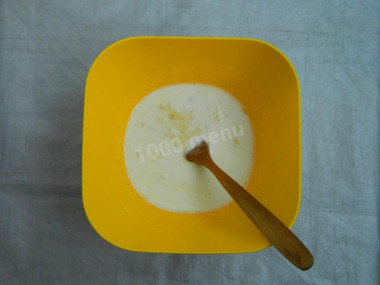
Heat the required amount of milk in a saucepan over medium heat so that it is hot, but do not bring it to a boil. Pour it into a bowl with flour.
Step 6:
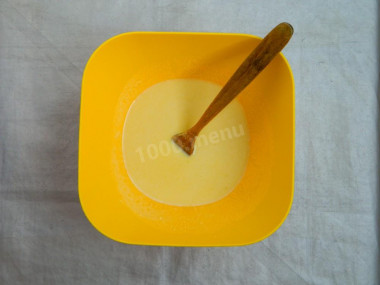
Mix thoroughly so that no lumps remain. Cool to room temperature. If the dough is not cooled, when yeast is added to it, they may die. If the yeast dies, the dough will not rise.
Step 7:
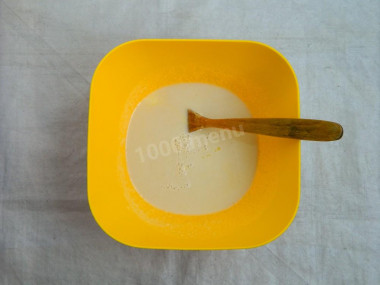
Pour the dissolved yeast into a bowl with the cooled dough and mix everything.
Step 8:
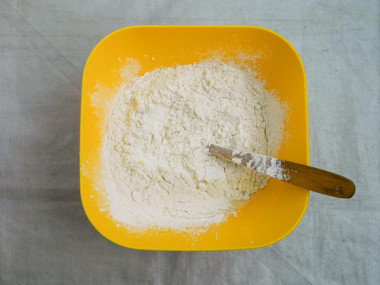
Sift half of the required amount of wheat flour to add oxygen to the flour and the dough was more airy. Add the flour in parts to the bowl with the dough and mix until smooth.
Step 9:
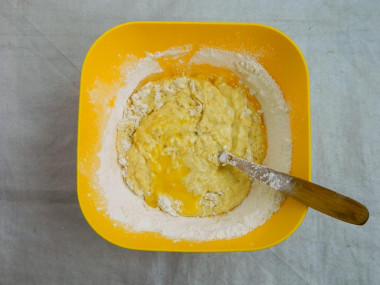
Wash the raw chicken egg with soap and dry it with a towel. Break it into a dough and mix thoroughly.
Step 10:
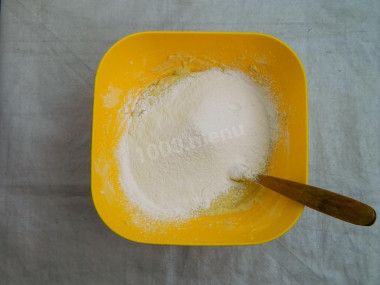
Leave about 2 tablespoons of flour. Sift the rest. The properties of flour of the same grade, but from different manufacturers, may differ. Therefore, add flour to the dough in parts.
Step 11:
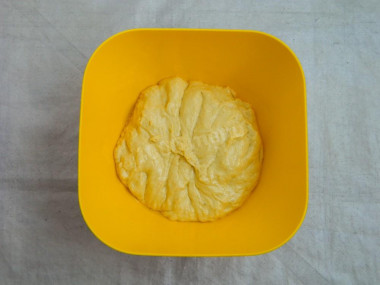
Knead the dough thoroughly. It should be very soft, tender and not spread. If the dough is too thin, add a little flour and, conversely, do not report a little so that the dough does not become tight.
Step 12:
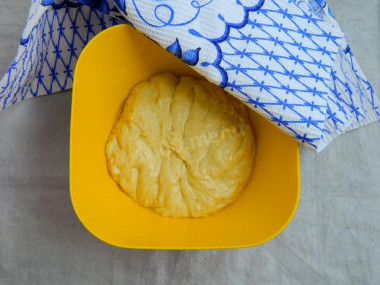
Lubricate the bottom and sides of the bowl with vegetable oil so that the dough does not stick to the dishes. Also knead the finished dough with your hands with vegetable oil. Cover the bowl with a napkin or towel so that it does not dry and rises well.
Step 13:
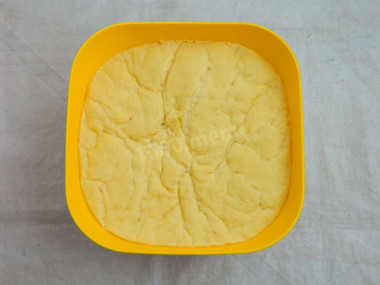
Leave in a warm place for about 2 hours. During this time, mix the dough a couple of times. This is necessary to release the accumulated carbon dioxide from it and saturate the mixture with oxygen so that the yeast can "breathe" and raise the dough further. Thanks to this, the dough will turn out porous and airy. The dough should increase 2-3 times.
Step 14:
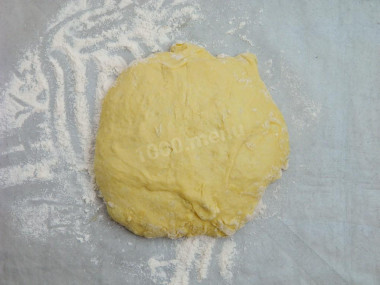
When the dough has risen, transfer it to a horizontal work surface sprinkled with flour. Cut with a floured knife into 12 identical pieces. Place baking paper on a baking sheet about 40x40 cm in size. With dry floured hands, form round buns, put them on paper and leave to rise for another half hour. Turn on the oven to warm up to 180°C.
Step 15:
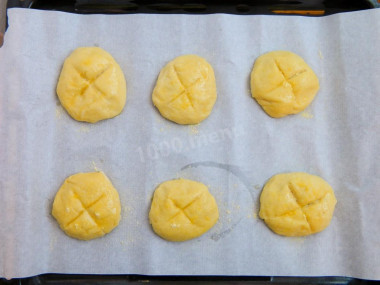
Melt the remaining piece of butter. Cut the risen buns from the top with a cross. To make the buns beautifully browned when baking, brush with melted butter on top. Sprinkle with corn flour before baking. Bake in a preheated oven on a medium shelf for 15-20 minutes. The baking time of the buns will depend on the power of your oven. Ready-made buns with a careful pressing of the hand should not "walk" and resemble jelly.
Remove the finished buns immediately from the baking sheet and cover with a towel so that they do not become dry.
Buns are equally good both hot and cold. They can ideally replace bread. Cornmeal buns are perfect for borscht. And you can also make original sandwiches from them.
Children are very fond of such buns with jam or condensed milk.
Caloric content of the products possible in the composition of the dish
- Whole cow's milk - 68 kcal/100g
- Milk 3.5% fat content - 64 kcal/100g
- Milk 3.2% fat content - 60 kcal/100g
- Milk 1.5% fat content - 47 kcal/100g
- Concentrated milk 7.5% fat content - 140 kcal/100g
- Milk 2.5% fat content - 54 kcal/100g
- Chicken egg - 157 kcal/100g
- Egg white - 45 kcal/100g
- Egg powder - 542 kcal/100g
- Egg yolk - 352 kcal/100g
- Ostrich egg - 118 kcal/100g
- Granulated sugar - 398 kcal/100g
- Sugar - 398 kcal/100g
- Butter 82% - 734 kcal/100g
- Amateur unsalted butter - 709 kcal/100g
- Unsalted peasant butter - 661 kcal/100g
- Peasant salted butter - 652 kcal/100g
- Melted butter - 869 kcal/100g
- Vegetable oil - 873 kcal/100g
- Salt - 0 kcal/100g
- Water - 0 kcal/100g
- Wheat flour - 325 kcal/100g
- Corn flour - 368 kcal/100g
- Whole grain corn flour, unseeded - 355 kcal/100g
- Whole grain corn flour sifted - 362 kcal/100g
- Corn flour from grain with removed germs of vitamin e - 364 kcal/100g
- Corn flour from grain with removed embryos, non-vitamin - 364 kcal/100g
- Dry yeast - 410 kcal/100g

